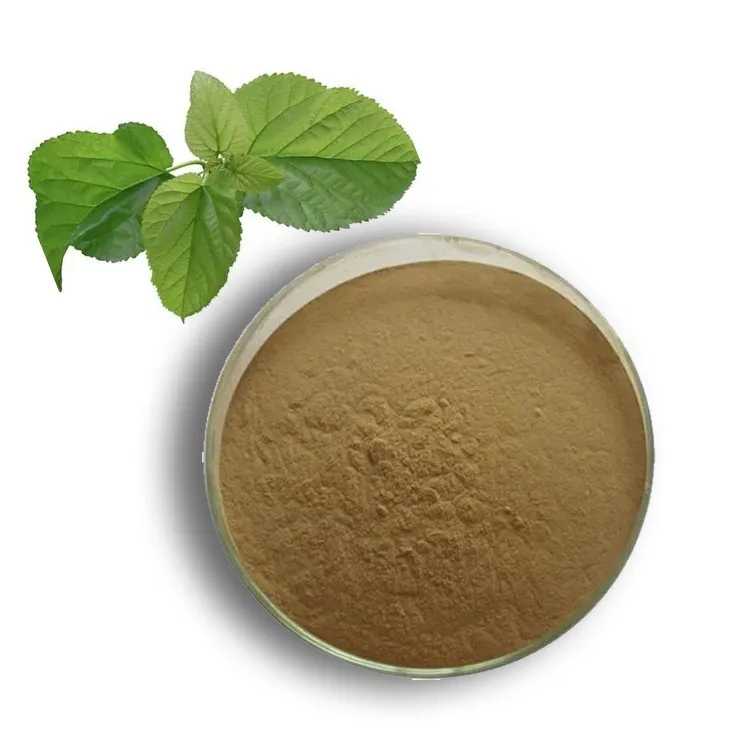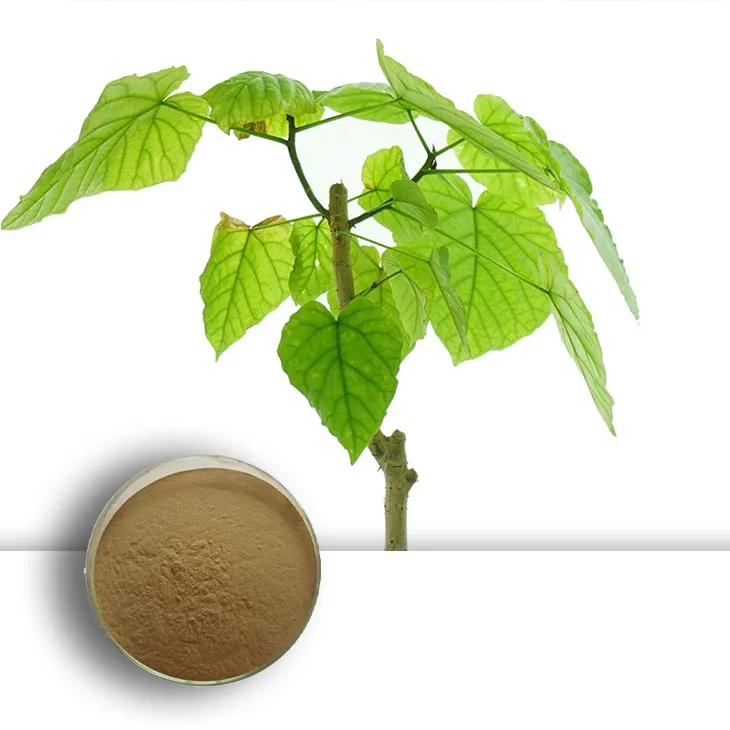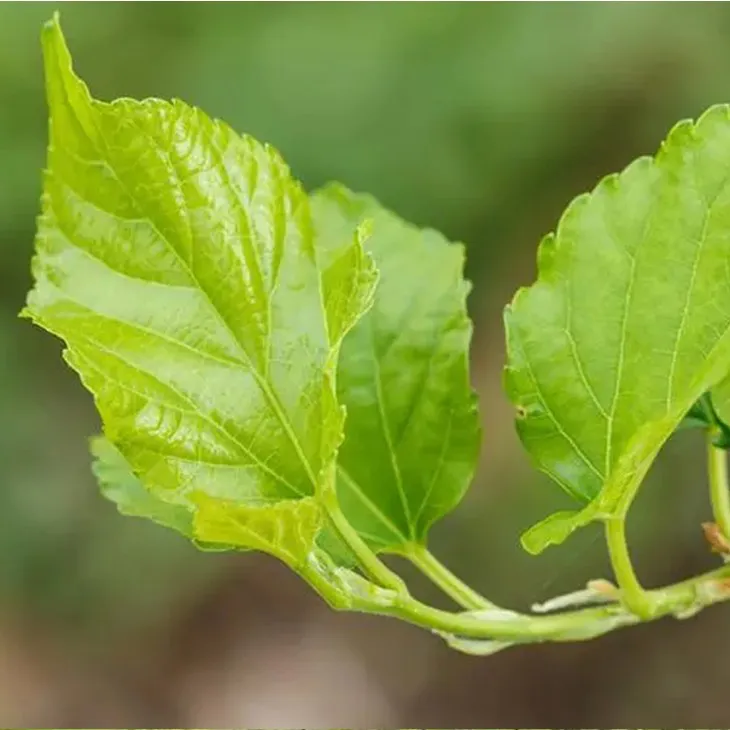- 0086-571-85302990
- sales@greenskybio.com
Extract mulberry leaf extract by steam distillation.
2024-11-30

1. Introduction to Steam Distillation of Mulberry Leaf
Steam distillation is a widely used method for extracting essential oils and other valuable compounds from plant materials. When it comes to mulberry leaves, this method offers a unique way to obtain a range of bioactive substances. Mulberry leaves have been used in traditional medicine for centuries in various cultures. The steam distillation process begins with the collection of fresh, high - quality mulberry leaves. These leaves should be free from diseases, pests, and any chemical contaminants. Once collected, they are carefully prepared for the distillation process.

2. The Steam Distillation Process
2.1 Preparation of Mulberry Leaves
The first step in the steam distillation of mulberry leaves is to wash the leaves thoroughly to remove any dirt or debris. After washing, the leaves are usually chopped or shredded into smaller pieces. This increases the surface area of the leaves, allowing for more efficient extraction during the distillation process. Chopping the leaves also helps in better penetration of steam, which is crucial for the release of the volatile compounds present in the mulberry leaves.
2.2 The Distillation Setup
A typical steam distillation setup consists of a distillation flask, a condenser, and a collection vessel. The chopped mulberry leaves are placed in the distillation flask. Steam is then introduced into the flask. This can be generated externally and then passed into the flask or can be generated within the flask itself using a heating element. As the steam passes through the mulberry leaves, it causes the volatile compounds in the leaves to vaporize. The vapor - steam mixture then rises up and enters the condenser.
2.3 Condensation and Collection
In the condenser, the vapor - steam mixture is cooled down, causing it to condense back into a liquid. The condensed liquid, which now contains the Mulberry leaf Extract along with water, is then collected in the collection vessel. Since the extract is usually water - soluble, further separation processes may be required to obtain a more concentrated form of the Mulberry leaf Extract. This can be achieved through methods such as evaporation or solvent extraction.
3. Significance in Modern Research
3.1 Bioactive Compounds
Mulberry leaf Extract obtained through steam distillation contains a variety of bioactive compounds. These include flavonoids, alkaloids, and phenolic acids. Flavonoids such as rutin and Quercetin have antioxidant properties. They can scavenge free radicals in the body, which are associated with various diseases including cancer, heart disease, and neurodegenerative disorders. Alkaloids present in the extract may have potential pharmacological effects, such as anti - inflammatory and analgesic properties. Phenolic acids also contribute to the antioxidant and anti - inflammatory activities of the extract.
3.2 Medicinal Potential
Modern research has shown that mulberry leaf extract has potential in the treatment of diabetes. Some of the compounds in the extract may help in regulating blood sugar levels by improving insulin sensitivity. It may also have a role in reducing blood pressure. Studies have indicated that the extract can relax blood vessels, thereby reducing the pressure on the arterial walls. Additionally, its antioxidant properties make it a candidate for the prevention of oxidative stress - related diseases.
3.3 Cosmetic Applications
In the field of cosmetics, mulberry leaf extract has gained attention. Its antioxidant properties can help in preventing skin aging. Free radicals in the environment can damage skin cells, leading to wrinkles, fine lines, and a dull complexion. The extract can also have anti - inflammatory effects on the skin, which is beneficial for treating skin conditions such as acne and eczema. It may be incorporated into various cosmetic products such as creams, lotions, and serums.
4. Role in Alternative Medicine
4.1 Traditional Use
In traditional medicine systems, mulberry leaves have been used for a long time. In Chinese medicine, for example, mulberry leaves are often used to treat coughs, fevers, and eye problems. The steam - distilled extract is believed to retain these medicinal properties to some extent. It may be used in the form of herbal teas or tinctures in alternative medicine practices.
4.2 Complementary and Alternative Therapies
Mulberry leaf extract can be used as part of complementary and alternative therapies. It may be combined with other herbal extracts or natural substances to enhance its therapeutic effects. For example, it could be combined with ginseng extract to boost energy levels and improve overall well - being. However, it is important to note that while alternative medicine uses these extracts, scientific evidence is still being explored in many cases, and proper medical advice should be sought before using them for treating serious medical conditions.5. Unique Properties of Mulberry Leaf Extract
5.1 Antioxidant Capacity
One of the most remarkable properties of mulberry leaf extract is its high antioxidant capacity. As mentioned earlier, the presence of flavonoids, phenolic acids, and other compounds gives it the ability to neutralize free radicals. This antioxidant activity is not only beneficial for human health but also for the preservation of food and cosmetic products. In food, it can prevent lipid peroxidation, which is responsible for rancidity.
5.2 Anti - microbial Activity
Mulberry leaf extract has shown anti - microbial activity against certain bacteria and fungi. This makes it a potential natural preservative in various industries. In the pharmaceutical industry, it could be used to prevent the growth of microorganisms in medications. In the food industry, it can help in reducing the growth of spoilage - causing organisms, thus increasing the shelf - life of food products.
5.3 Nutritional Value
Mulberry leaves are rich in nutrients such as vitamins (including vitamin C, vitamin E, etc.), minerals (such as potassium, calcium, etc.), and dietary fiber. When the leaves are processed through steam distillation, some of these nutrients may be retained in the extract, albeit in smaller amounts. This can contribute to the overall nutritional profile of products that contain the extract, such as dietary supplements.6. Conclusion
Steam distillation of mulberry leaves offers a valuable method for obtaining an extract with a wide range of potential applications. From its significance in modern research, its role in alternative medicine, to its unique properties, mulberry leaf extract has much to offer. However, further research is still needed to fully understand its mechanisms of action and to optimize the extraction process for maximum yield and quality. With continued exploration, mulberry leaf extract obtained through steam distillation may find even more diverse applications in the fields of medicine, cosmetics, and food.
FAQ:
Q1: What is the principle behind steam distillation for mulberry leaf extract?
Steam distillation works on the principle that when steam is passed through the mulberry leaves, the volatile compounds in the leaves get vaporized along with the steam. These vaporized compounds can then be condensed back to a liquid form, which is the extract. The steam helps to carry out the volatile components which may include various bioactive substances present in the mulberry leaves without causing significant degradation to these components.
Q2: What are the main bioactive compounds obtained from mulberry leaf extract by steam distillation?
The main bioactive compounds obtained from mulberry leaf extract through steam distillation may include flavonoids, alkaloids, and terpenoids. Flavonoids such as rutin are known for their antioxidant properties. Alkaloids may have potential medicinal effects. Terpenoids can contribute to the unique aroma and may also possess biological activities like anti - inflammatory properties.
Q3: How does mulberry leaf extract obtained by steam distillation play a role in alternative medicine?
In alternative medicine, mulberry leaf extract obtained by steam distillation is believed to have several benefits. It may be used for its potential hypoglycemic effects, which can be beneficial for diabetic patients. It also has antioxidant properties that can help in reducing oxidative stress in the body. Some traditional medicine systems claim that it can be used for improving digestion and treating certain skin conditions.
Q4: What are the challenges in extracting mulberry leaf extract by steam distillation?
One of the challenges is the optimization of extraction conditions. The temperature and pressure of the steam need to be carefully controlled to ensure maximum extraction of the desired compounds without causing thermal degradation. Another challenge is the separation of the extract from the condensed steam mixture, as it may contain impurities that need to be removed. Also, the yield of the extraction may not always be high, and efforts need to be made to improve the efficiency of the process.
Q5: How is the quality of mulberry leaf extract by steam distillation measured?
The quality of the mulberry leaf extract obtained by steam distillation can be measured in several ways. One way is to analyze the content of the bioactive compounds using techniques such as high - performance liquid chromatography (HPLC) to determine the concentration of flavonoids, alkaloids etc. Another aspect is to test its antioxidant activity using assays like DPPH (2,2 - diphenyl - 1 - picrylhydrazyl) assay. The purity of the extract can also be evaluated by looking at the presence of impurities through spectroscopic methods.
Related literature
- Steam Distillation of Botanical Extracts: A Review"
- "Mulberry Leaf: Properties and Potential Therapeutic Applications"
- "Bioactive Compounds in Mulberry Leaves and Their Extraction Methods"
- ▶ Hesperidin
- ▶ Citrus Bioflavonoids
- ▶ Plant Extract
- ▶ lycopene
- ▶ Diosmin
- ▶ Grape seed extract
- ▶ Sea buckthorn Juice Powder
- ▶ Fruit Juice Powder
- ▶ Hops Extract
- ▶ Artichoke Extract
- ▶ Mushroom extract
- ▶ Astaxanthin
- ▶ Green Tea Extract
- ▶ Curcumin
- ▶ Horse Chestnut Extract
- ▶ Other Product
- ▶ Boswellia Serrata Extract
- ▶ Resveratrol
- ▶ Marigold Extract
- ▶ Grape Leaf Extract
- ▶ New Product
- ▶ Aminolevulinic acid
- ▶ Cranberry Extract
- ▶ Red Yeast Rice
- ▶ Red Wine Extract
-
Tongkat Ali Extract
2024-11-30
-
Black Garlic Extract
2024-11-30
-
White Peony Extract
2024-11-30
-
Almond Extract Powder
2024-11-30
-
Soy Extract
2024-11-30
-
Mulberry leaf Extract
2024-11-30
-
Cranberry Extract
2024-11-30
-
Medicinal Marshmallow Extract
2024-11-30
-
Citrus Aurantium Extract
2024-11-30
-
Nettle Root Extract
2024-11-30




















